It’s well said that the money is in the email list.
Got a fabulous offer, fantastic copy and phenomenal creative? It counts for zilch if you don’t have an email list of people wanting to hear from you.
And if your copy isn’t fantastic and creative isn’t phenomenal, it’s no big deal, you can fix it in a couple of weeks—unlike building a list. List building takes time, takes strategy.
It never stops either. List attrition due to unsubscribes and bounces decreases list sizes by 10% to 25% each year.
Growing your list is highly profitable too. Compare the following breakdown for profit with a list size of 250,000 vs 300,000.
| A | B | |
| List Size | 250,000 | 300,000 |
| Campaign Creation | $700 | $700 |
| Send Fee | $400 | $480 |
| Total Cost | $1,100 | $1,180 |
| Revenue Per Email | $0.03 | $0.03 |
| Total Revenue | $7,500 | $9,000 |
| Profit | $6,400 | $7,820 |
The profit increases by 22% with a 20% list increase. Because there is almost no incremental cost in campaigning to a larger list, it’s very profitable, it all goes to the bottom line.
BUT don’t think for a moment it’s about list size only. When growing your list, you must maintain quality too.
Bulking up your email list with irrelevant sweepstake entrants or third-party purchased data is not a fast track to higher profits. It’s more likely a fast track to the junk folder.
What to Offer
First and foremost, it’s about the value exchange.
To persuade someone to share their email address, the value you are offering must be enough for them to give up their data. They get a valuable benefit; you get a valuable email address.
The Direct Marketing Association consumer opinion tracker asked consumers what it takes for them to sign-up.
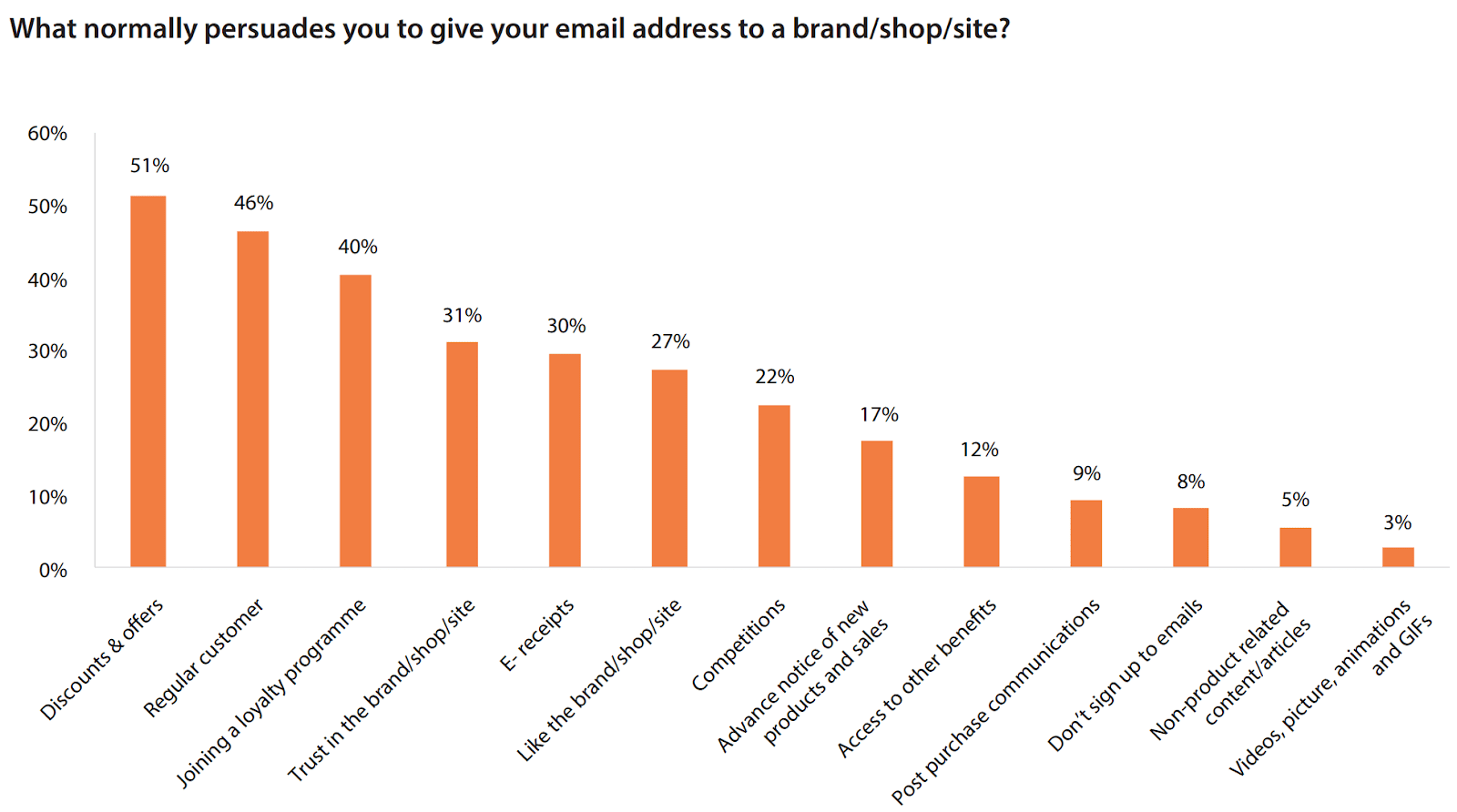

Most (51%) consumers said discounts & offers persuades them to subscribe.
Value can take many forms, not only monetary. Examples used successfully by many companies include:
- Access to exclusive events
- An e-book or whitepaper
- Online course access or an email serialized course
- Access to a webinar or previous conference/webinar replays
- Free use of an online resource or tool that helps solve a common problem (e.g. wedding planning template, business planner, tax calculator)
- A quiz with the promise of tailored information—for example, which vitamins suit you
The instant world of today means people don’t want to wait for value. Think about incentives that have instant value.
Where to Ask
One of the best sources of qualified subscribers is your own website. According to MarketingSherpa, only 30% of visitors return to your website. Getting their email address when they do visit is the key to developing a relationship with the 70% that aren’t otherwise coming back.
On Neil Patel’s website he adds an element of fun and gamifies his instant signup incentive using a spin-to-win. The incentives offered are carefully targeted to appeal to the audience Neil wants as subscribers.
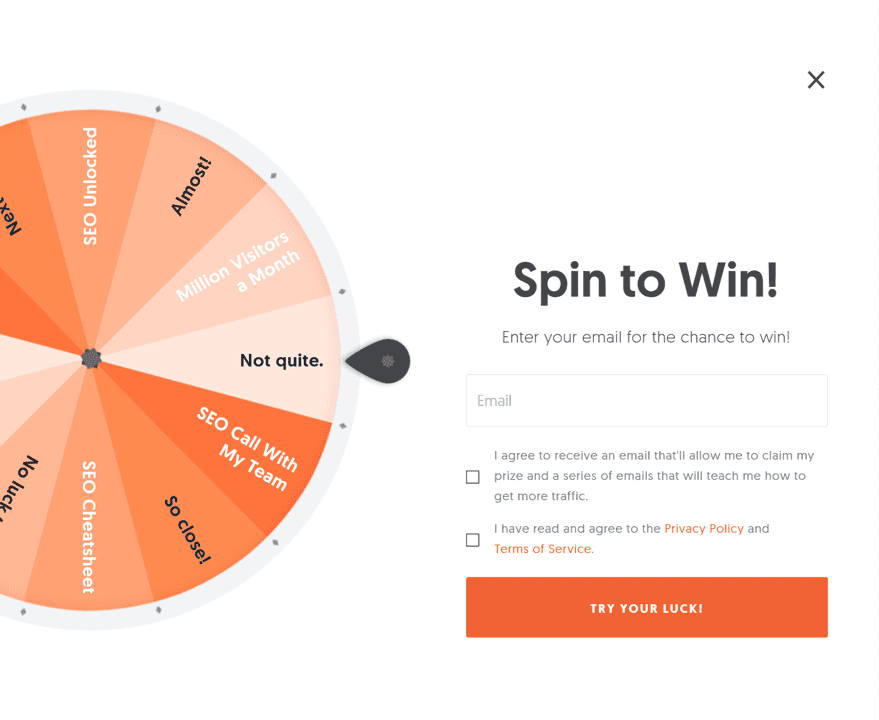

FabFitFun, lifestyle subscription brand and winner of the 2019 Growth Marketing Award for Most Captive Audience, uses a 10% off your first order. Unlike a spin-to-win, this makes everyone a winner and targets the offer to the subscribers most interested in the FabFitFun box. After all, a 10% discount has no value if you’re not interested in buying. That ensures email list quality.
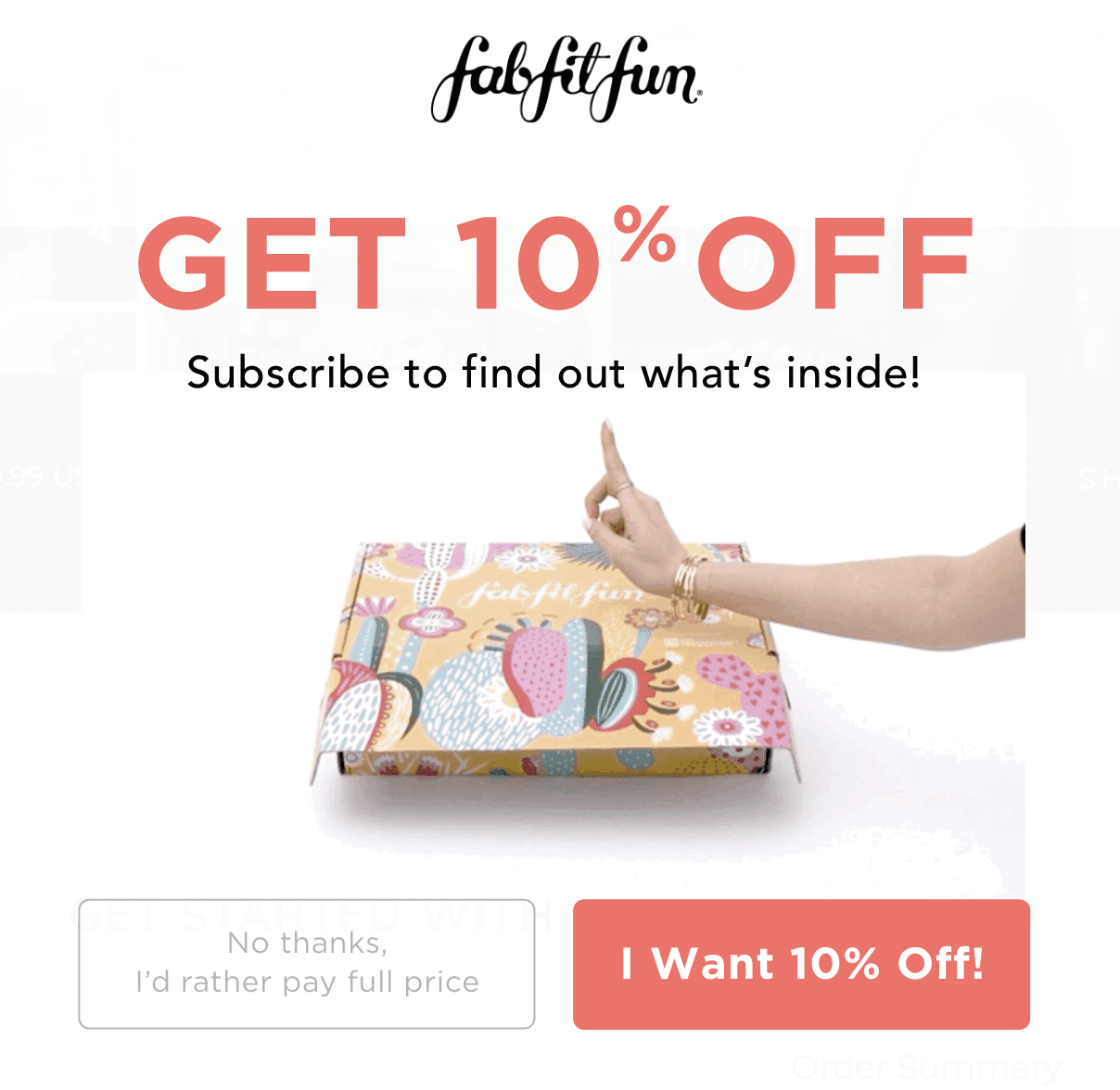

Travelzoo provides well-researched travel deals. They value the email address so highly you must be a member and provide your email address to get access to the deals. There are clear pros and cons to such a strategy. Your offer has to be convincing enough before people have had the chance to taste it and thus overcome the inertia to signup.


Travelzoo isn’t alone with gating access—ShopRunner has a similar strategy. You have to be a member to receive unlimited free 2-day shipping from their retail partners.


Don’t Limit Yourself
Don’t limit yourself to only having one method of capturing email addresses on your website. There are many ways that work, consider how you can use these methods:
- Popup(s)
- Integrated with process (e.g. checkout, registration or quote)
- Include with article content
- Sidebar
- Dedicated subscription page
- Site footer
- Out of stock or price drop alerts
Yes, Popups
Popups work. In fact, I’ve never seen them fail. They remain one of the most effective ways to capture email addresses and the perceived negative impact of higher page bounce or deterring visitors doesn’t happen when you’re smart.
I’m not talking about those mindless dumb popups but intelligent popups, like those from Digioh, that allow targeting rules such as:
- Show based on number of seconds spent on a page or number of page visits
- Target to show on specific pages
- Show on exit intent
- Target traffic sources, e.g. show for SEO traffic but not visits from email
- Device specific, what and whether to show on mobile vs desktop
- Control how often to re-show
If you’ve yet to try a popup then start with one run of site or on your home page and show it once per session to new visitors after 5 to 10 seconds.
Then refine it further from there.
This is a bold example from Bath & Body Works that appears on their home page. The headline makes it feel like their content and offers won’t be available elsewhere. People love to be informed, to be the first to know.
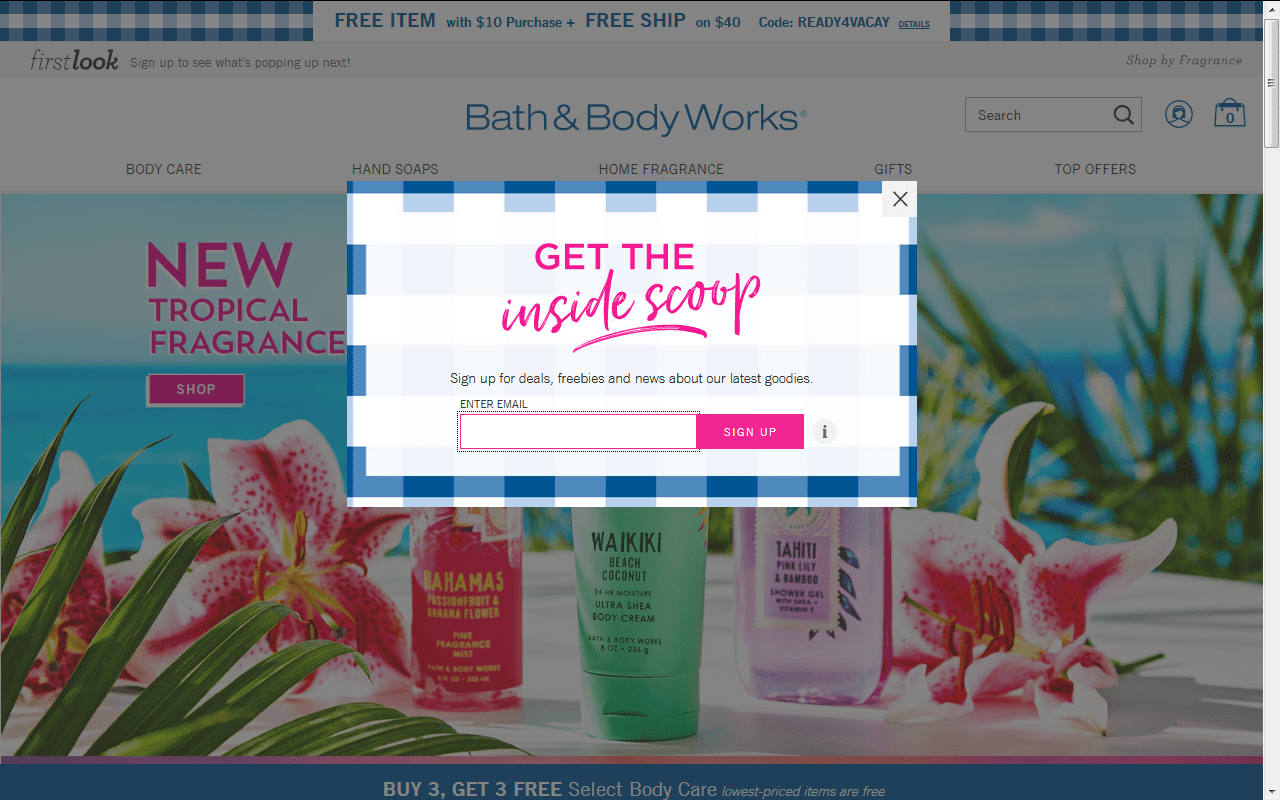

Target the Incentive
Using different popups on different pages means you can increase response by making the incentive related to the page content.
Kissmetrics found that matching the incentive to the page doubled response.
On their articles about Twitter, their popup offered a Twitter Marketing Guide e-book, whereas for Facebook articles they offered an incentive of a Facebook Guide e-book.
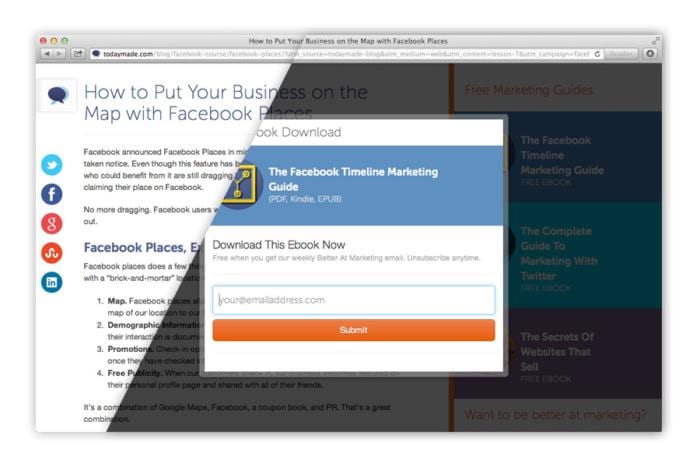

Capture the Most Valuable Customers
Customer retention is one of email’s biggest strengths and anyone buying or registering is your most valuable audience segment.
This makes any account registration or checkout process a must for email permission capture.
The Womanwithin.com example below of new customer registration uses a pre-ticked opt-in box.
The language is positive benefit-led. Rather than saying ‘subscribe to our mailing list’ they use ‘keep me informed with the latest deals and trends.
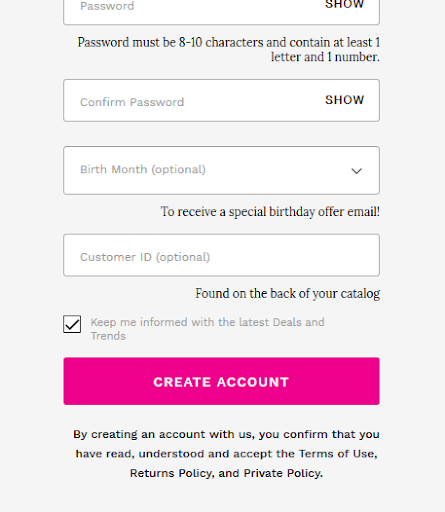

In many regions, such as the EU or Canada, pre-selected boxes are not allowed for consent. Instead, they require an affirmative positive action for consent—a box that is proactively ticked. If you need to get consent compliant with the GDPR then check out these tips.
Catch the Right Moment
A great time to ask someone to subscribe is when they are engaged and have just received something of value from you, such as adding a call to action to subscribe at the end of your article content. If someone has just read to the end, then they must have enjoyed the content.
Strike in the moment and suggest subscribing to get more of the content they just valued. Socialtriggers.com have this join promotion at the end of their content.


The Socialtriggers’ call to action uses social proof too—join over 200,000 subscribers. Strong credibility to help convince people to subscribe.
Pitch It When You’re Talking
Yes, I mean literally when you’re talking to your audience, support and telesales call centers. Add the request for email address and permission into the role of call center staff.
I’ve worked with brands that successfully capture permission through their call center operation. Just remember the value exchange in the call script. Explain the benefit of opt-in.
In many cases, telesales agents are heavily incentivized. To be successful with email address permission capture an incentive will be needed in those cases.
This brings its own risks, agents may be sloppy with email address entry or not correctly ask for permission. The good news is the risks can be successfully managed.
- Require the agents to use phonetics to clarify similar sounding letters
- Use double opt-in for email addresses captured over the phone
- Integrate a real-time list verification service, such as Kickbox, for staff to check addresses at time of entry
- Add to call center quality and call calibration that the correct processes are followed
Ideally, staff incentives are paid only for email addresses that completed double opt-in. Aligning incentive focus with the business objective.
Capture Wherever Your Audience Goes
Where else do you meet your audience?
It can be offline too, such as in brick-and-mortar stores and with point-of-sale signups.
Gamification has been used by several brands in physical locations to get email addresses.
Blackwell’s Bookshop captured over 30,000 email address in two months with this method.
The customer is handed a physical scratch card at the point of sale, with the possibility of winning a prize.
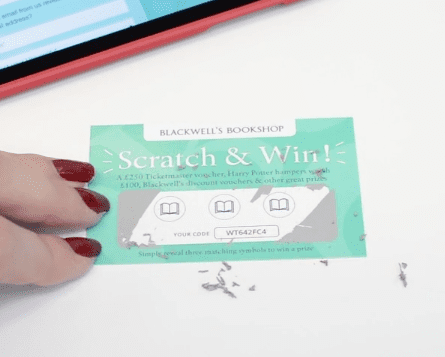

The process is fun and simple.
- They scratch the card
- Reveal if they’ve won and a code (they have!)
- Go online to discover the prize
- Enter email address and claim prize
Prizes may be whatever you want, such as a discount on the next order.
Three Simple Rules to Email List Growth
I hope the above examples inspire you to develop an email list growth strategy. Consider what’s right for your brand and address these three rules for faster list growth:
- Ask more often
- In more places
- More effectively































